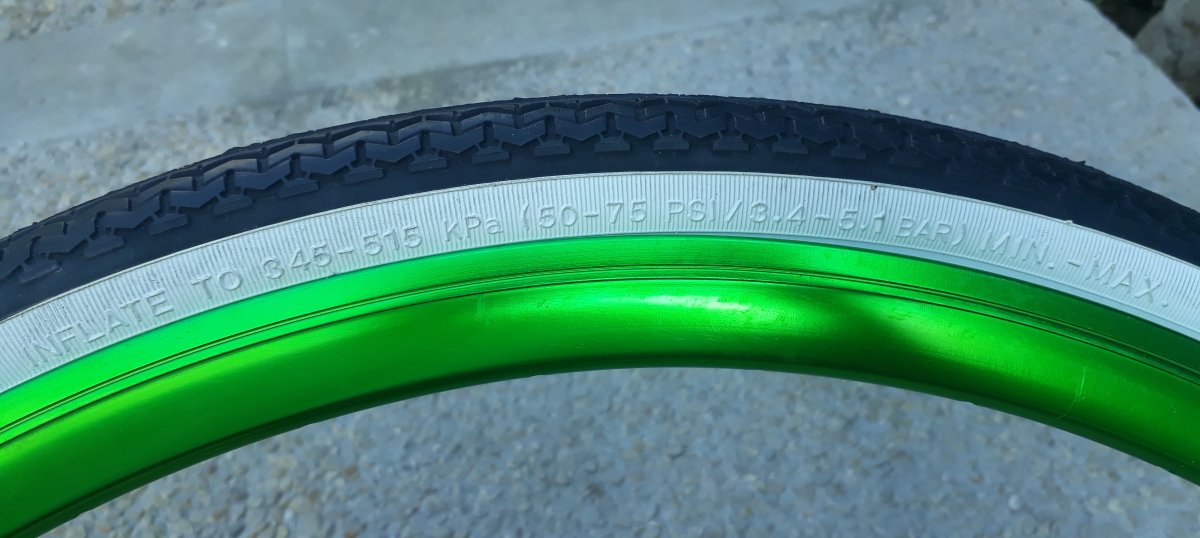Why the pressure of a bike tire is so important?
Tire pressure influences the grip and braking of your bike, as well as comfort of the cyclist. The pressure value therefore has an impact on your safety, your performance and the pleasure you will have in using your bicycle.
The smaller is the width of a bike tire, the greater its pressure value in order to avoid impacts on the rim and punctures without pinching (air chamber which is positioned between the tire and the rim, for example the pressure value for a road bike will be generally between 6 and 8 bars, while the pressure value for a MTB tire will be from 2 to 3.5 bars.
An under-inflated tire will be more likely to puncture and its rolling resistance will be greater.
The practice of track cycling is a special case because in this use, the search for performance is maximum: track bikes have no braking system, they are fitted with a fixed gear and the comfort of cyclists on track does not have priority since the track is smooth and without alterations. In this case the pressures used can reach 10 to 12 bars with hoses, the tires are not suitable for this type of use.
For cyclo-cross and gravel the pressure to be applied will be higher than that of mountain bike but lower than that of road bikes, for this type of practice the pressure value will be around 8% of the weight of its user in the limits of the minimum and maximum values recommended by the tire manufacturer.
The most famous brands of tires for bikes, mountain bikes, fixies, BMX or electric bikes are Michelin, Hutchinson, Continental,....
The accessories to reach the right pressure value
Each manufacturer recommends a minimum and maximum pressure depending on the model concerned. These indications are on the sidewalls of the tire.

Compliance with these indications is essential in order not to shorten the life of the tire. To precisely adjust the tire pressure it is necessary to use a foot pump fitted with a pressure gauge. The measured pressure value will be indicated in psi and / or in bars.
Advice: after each ride it is recommended to "deflate" your tires so that they do not deform, indeed the section of a tire can increase after a certain number mounths under pressure, moreover this increase in a section may increase the risk of punctures.
Correspondence of pressure values
Here the units correspondences psi / bars:
| Bars | PSI | Bars | PSI | |
| 0.5 | 7 | 5.5 | 80 | |
| 1 | 15 | 6 | 87 | |
| 1.5 | 22 | 6.5 | 94 | |
| 2 | 29 | 7 | 102 | |
| 2.5 | 36 | 7.5 | 109 | |
| 3 | 44 | 8 | 116 | |
| 3.5 | 51 | 8.5 | 123 | |
| 4 | 58 | 9 | 131 | |
| 4.5 | 65 | 9.5 | 138 | |
| 5 | 73 | 10 | 145 |
The pressure of a road bike tire is generally given for 10% of the weight of its user with a minimum of 6 bars and a maximum of 8 bars.
The pressure of a mountain bike tire will depend on the type of terrain (muddy, dry, ...) of the tire section and the practice: cross country, downhill, enduro, freeride or trial. For use in cross country for example, the pressure value will be between 2 and 2.5 bars for wet ground and 2.5 to 3 bars for rolling ground (dry). These pressures can be lowered for better grip by the use of tubeless because no inner tube therefore no risk of puncture by pinching.
These values may vary slightly depending on the temperature.
Maintenance
The tires do not require any specific maintenance, but it is recommended to deflate your tires on each outing in order to prolong their life as much as possible.
It is recommended to check your tires before each ride to verify that they do not have cuts or cracks on the sidewalls and on the tread. When this type of fault appears, it indicates that the tire is at the end of its life and that it is necessary to replace it.
Here are the pumps we offer.
Here are the tires, tubes and tubeless accessories that we offer.